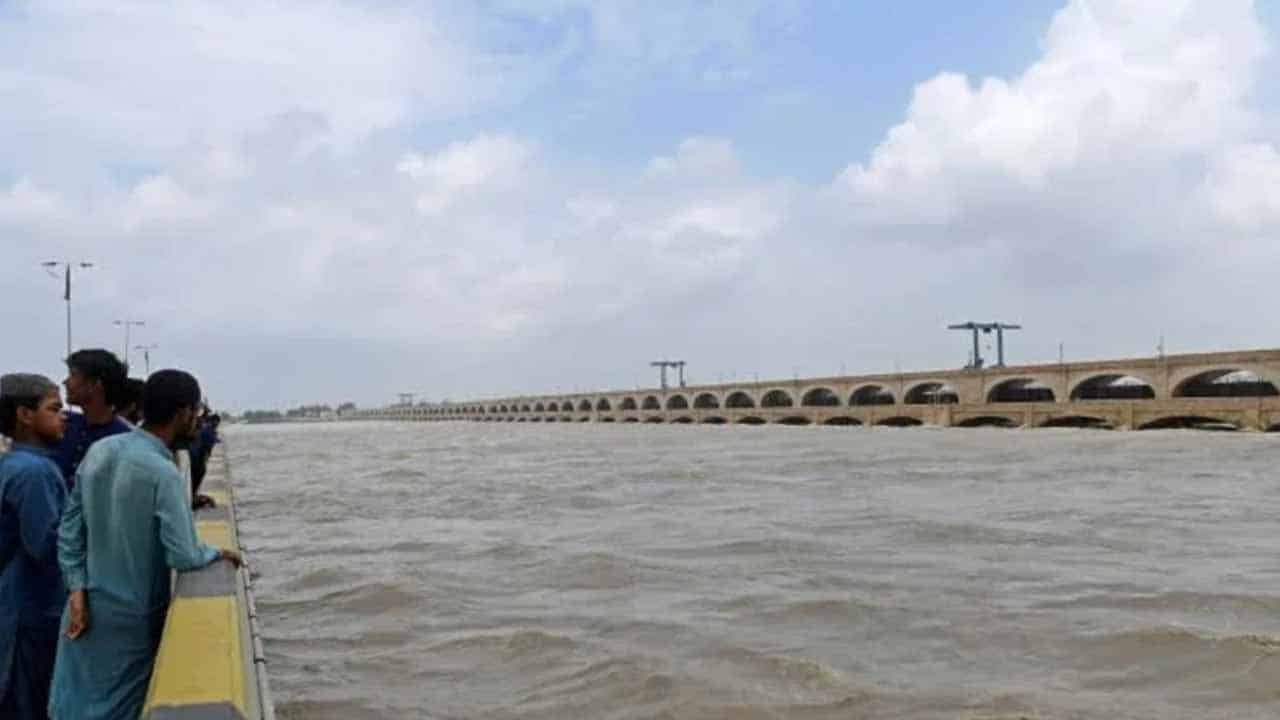As India releases water, the Chashma Barrage in Punjab may see a low-level flood on Monday. However, a reduction in the downstream of the Indus River is possible in the next few days.
Currently, the total flow of water in the rivers is 425,000 cusecs, with a storage capacity of 82 lakh acre feet.
The release of water from India raised the flow of the Chenab River at the Marala headworks to 169,000 cusecs, 193,000 at the Khanki headworks, 194,000 at Kadirabad, and 33,000 at Tareemo.
Furthermore, the water flow at Tarbela in the Indus River is 153,000 cusecs, whereas the flow at Nowshera in the Kabul River is 56,000 cusecs.
The flow of water in the Indus River at Kalabagh is 210,000 cusecs, and the flow of water at the Taunsa Barrage is 226,000 cusecs.
Furthermore, the inflow at Guddu Barrage is 1887,000 cusecs, the flow at Sukkur Barrage is 144,000 cusecs, and 29,000 cusecs of water is conveyed to the sea.
People have been rescued from floodwaters
Meanwhile, in the Tehsil Shakargarh, a joint rescue operation of the Punjab Rangers and Rescue 1122 rescued 223 individuals caught in flood water.
During cultivation, the majority of people, including children and women, became caught in floodwaters from India.
Prime Minister orders foolproof arrangements
Prime Minister Shehbaz Sharif has urged the necessary agencies to develop foolproof plans to deal with any potential flooding in the Ravi, Chenab, and Sutlej rivers.
He also instructed them to prepare for a fast and safe evacuation and to raise awareness among residents in possibly affected areas.
The prime minister thanked the Rangers and Rescue 1122 workers for evacuating and assisting those caught in flood water in Shakargarh.
He said that quick relief efforts saved the lives of dozens of individuals, including women and children. “I, along with the entire nation, pay tribute to the country’s devoted personnel,” he said.






